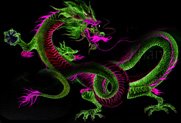Legend of Silk in China
China is the first country who knew how to produce silk. According to the Chinese legend, manufactured silk about 2600 BCE was sponsored by the Empress; the mulberry trees were cultivated to raise silkworm in order to manufacture silk.
In Qianshanyang, Zhejiang province about 5000-years old silk ribbons and fragments of silk cloth have been found some evidence of the date of silk is a mummy in Egypt has been recovered with silk, dating to c. 1070 BCE, which indicates the silk trade along The Silk Road.
However the immigration brought the knowledge of silk culture to Korea around 200 BCE and by 300 BCE all over Asia was also known about the culture of silk. Finally, silkworms were smuggled out of China to Greece so in the sixth or seventh century CE southern Europe was developing a silk industry, the first countries were Greece, Italy and Turkey then spread to Spain, Portugal and France.
Bombyx mandarina Moore which was found only in China is a silk moth that trive specifically on the leaves of the white mulberry bush was selected to be the prime candidate for sericulture.
To cultivate silkworm needs a great deal of care, quiet and sanitation. The silkworm farmer treats them as royalty. The silkworms live very short time – only about two months and they are very greedy; eat about 30,000 times compares to its weight.
In Qianshanyang, Zhejiang province about 5000-years old silk ribbons and fragments of silk cloth have been found some evidence of the date of silk is a mummy in Egypt has been recovered with silk, dating to c. 1070 BCE, which indicates the silk trade along The Silk Road.
The secret of Chinese Silk
Chinese people kept secret of the cultivation of silkworms and the manufacturing silk fibers into clothes for 2,000 years; exported live silk worms out of China was prohibited that was the policy to protect the secret of the incredible silk.However the immigration brought the knowledge of silk culture to Korea around 200 BCE and by 300 BCE all over Asia was also known about the culture of silk. Finally, silkworms were smuggled out of China to Greece so in the sixth or seventh century CE southern Europe was developing a silk industry, the first countries were Greece, Italy and Turkey then spread to Spain, Portugal and France.
Silkworm, source of Silk
As almost people know that silk is made of silkworm somebody may think that silkworm is a kind of worms but actually not, silkworm is the caterpillar of the Bombyx mori moth. Due too many millennia of fastidious cultivation the Bombyx mori has come to produce the finest white silk thread ever known. Bombyx mori breed very fast less than one week it can produce around 500 tiny eggs which are 30,000 caterpillars. The foods of Bonbyx mori are mulberry’s leaves.Bombyx mandarina Moore which was found only in China is a silk moth that trive specifically on the leaves of the white mulberry bush was selected to be the prime candidate for sericulture.
Two kinds of Silks
Silk is an animal fiber or natural fiber; made of silkworm. There are two varieties of silkworm; the wild and the cultivated. The wild silks are brown and have a coarse, hard texture. This worm feeds on the scrub oak instead of the mulberry leaf and grows in India, China and Japan. The first two countries called this silk as Tussah silk and in Japan they called wild silk.To cultivate silkworm needs a great deal of care, quiet and sanitation. The silkworm farmer treats them as royalty. The silkworms live very short time – only about two months and they are very greedy; eat about 30,000 times compares to its weight.





























0 Comments:
Post a Comment
<< Home